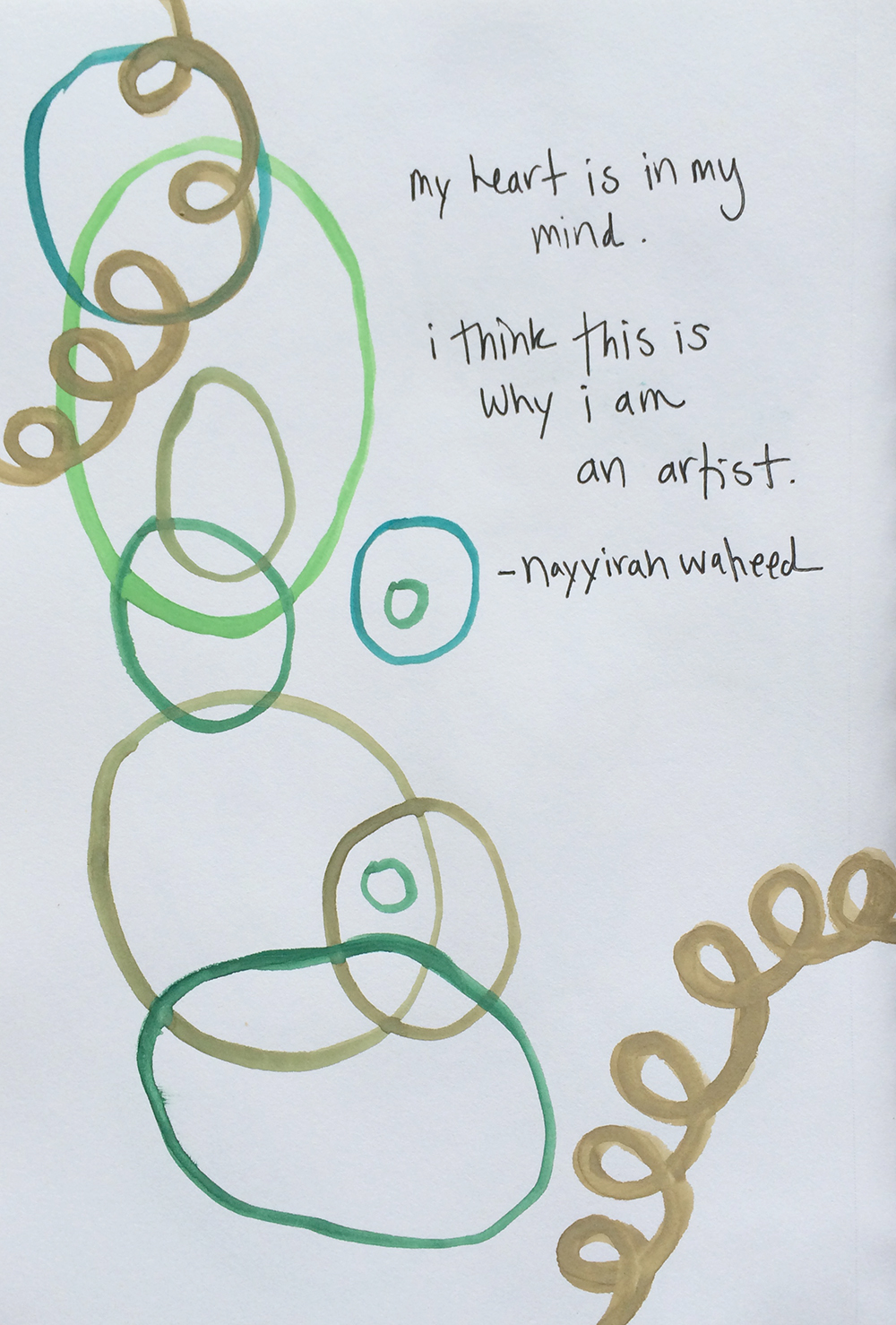When I began working in higher education, I unintentionally left my arts background behind in the colorful classrooms of my middle and high school teaching life. I became caught up in a narrow conception of scholarly-teaching and the “tenure track,” which didn’t include the arts . . . or so it seemed. Models for incorporating the arts in teaching and research were not prevalent in my immediate context, nor did I come across examples in my many reviews of literature and other research. Although I did not identify the impact of this omission for years, it was palpable in my subconscious. I recall a few rare occasions where I almost recognized the absence.
Once was at a college-wide meeting in my early years as junior faculty. I observed a faculty member with strawberry blonde hair drawing throughout the presentations and discussions. However, she wasn’t just doodling in the margins of her meeting agenda or scribbling as an unplanned aside. No, she had arrived at this meeting prepared to create! Spread on the table before her was a brilliant bound art journal and next to her was a collection of art pens, pencils, and oil pastels. I remember feeling puzzled and unsure about her behavior of visual journaling during a professional meeting. Now I understand her work as a practice of scholarly-teaching . . . as a/r/tography! While I never officially met this person, I now know who she was and how her arts practice was fully and vibrantly incorporated into her work as a teacher-scholar. She left my university, but not without first leaving an indelible mark on my own trajectory in higher education and emboldening me to reclaim my life as an artist. As I reflect in a collaboratively authored chapter:
“. . .[my] return to the arts was due to a displacement from traditional academic work and structures– in much the same way Kusserow (2008) describes arriving to her work with ethnographic poetry. Kusserow writes, “I came to poetry as a refugee. After years of forcing myself to perfect rigid academic writing . . .” (p. 73). Like Kusserow, [I] felt the need for [my] academic work to “move beyond a mere intellectual exercise” and fully reflect the range of complex emotions and actions comprised by [my] deep motivation to engage in teaching and learning as a radical act of creativity. . . In this sense, not only do the arts hold value for the scholarly work of teaching, but also they cultivate an opportunity to more fully balance the personal and professional.”
(Redmond et al., 2021, page 130)

Irwin (2013) explains “a/r/tography is a research methodology, a creative practice, and a performative pedagogy that lives in the rhizomatic practices of the liminal in-between” (p. 199). The visual design offered in the typography of the word itself illuminates the complexities of our identities as artists, researchers, and teachers. A/r/tography has become intimately connected with my teaching philosophy as it enables me to invite students to represent their knowledge in expressive ways that use both alphabetic text and visual content– “a/r/tography merges images and text, without privileging either, in order to open up and create new meanings and imaginings” (Leavy, 2012, p. 7). Through visual journaling and prose in particular, I “live a life of inquiry” that I can bring to all manner of my daily affairs– teaching, research, and otherwise (Springgay & Irwin, 2005, p. 901).
I use a/r/tography not only as a method of scholarly inquiry and teaching praxis, but also as a generative means of reflecting on my experiences in creative ways. And it is essential that I do engage in the creative practices of the arts each day because, as Brené Brown (2010) explains “When I make creating a priority, everything in my life works better.”
While a/r/tography is intimately connected with the work of scholarly-teaching, because the practice recognizes the liminal, the in-between, and the rhizomatic interplay of our complex human identities, it is easily extended into the every day. Everyday a/r/tography has become a strong thread of my work-life balance, enabling me to unfold a practice of creativity and wellness that facilitates wholeness in my life as both artist and academic.
(Poem in journal page pictured above by Nayyirah Waheed.)
Citation: Redmond, T. (2021, October, 16). Everyday A/r/tography. Retrieved from https://theresaredmond.com/a-r-tography/everyday-a-r-tography/
References
Brown, B. (2010). The gifts of imperfection: Let go of who you think you’re supposed to be and embrace who you are. Hazelden Publishing.
Irwin, R. L. (2013). Becoming a/r/tography. Studies in Art Education, 54(3), 198-215.
Kusserow, A. (2008). Ethnographic poetry. In Cahnmann-Taylor, M., & Siegesmund, R. (Eds.) Arts-based research in education (pp. 90-96). Routledge.
Leavy, P. (2012). Introduction to Visual Arts Research special issue on a/r/tography. Visual Arts Research, 38(2), 6-10.
Redmond, T., Luetkemeyer, J., Davis, J., Hash, P., & Adams, T. (2021). Creating space for care: Sustaining the emotional self in higher education. In Ruffin, I. & Powell, C. (Eds). The Emotional Self at Work in Higher Education (pp. 120-145). IGI Global. doi: 10.4018/978-1-7998-3519-6.ch007
Springgay, S., Irwin, R. L., & Kind, S. W. (2005). A/r/tography as living inquiry through art and text. Qualitative inquiry, 11(6), 897-912.
